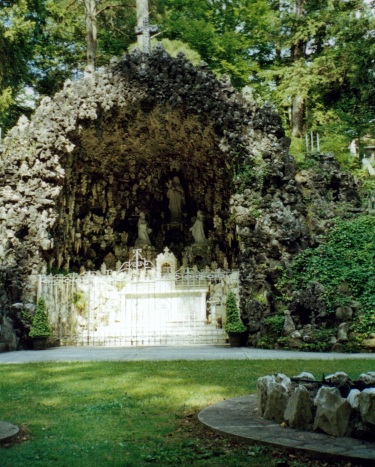
About 10-miles north of Mother Angelica's monastery is the remarkable ''Ave Maria Grotto'' and ''Jerusalem in Miniature'', in the grounds of St, Bernard Benedictine Abbey, near Cullman, Alabama. This peaceful 4-acre wooded parkland is the setting for a Lourdes-style grotto and 125 miniature reproductions of some of the most famous Catholic structures in the world. The artistic creations there have firmly established St. Bernard Benedictine Abbey on the map of must-visit ''roadside America'' sites. They are so good that Ave Maria Grotto is included on the American National Register of Historic Places.
Little Brother Joseph
To understand Ave Maria Grotto, one needs to first become familiar with its creator, the late Brother Joseph Zoettl O.S.B.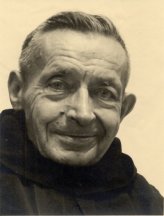
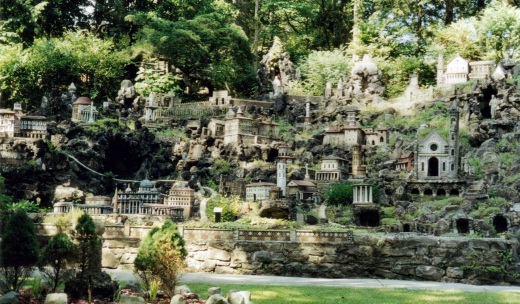
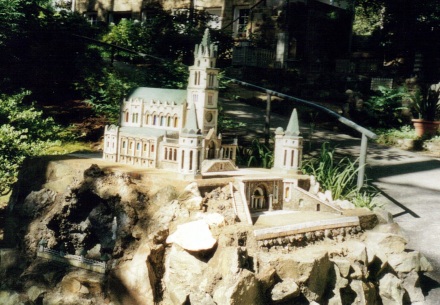
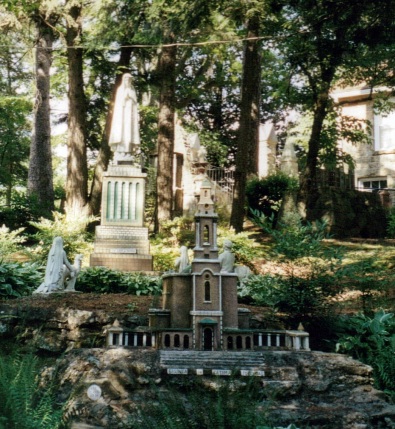
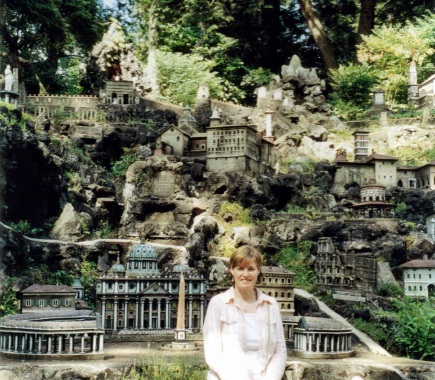
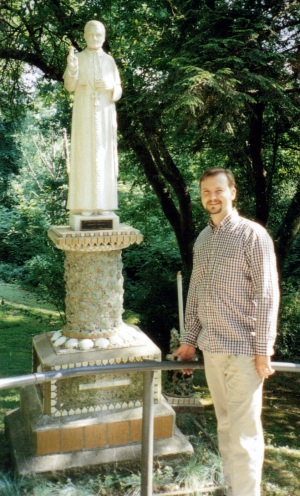
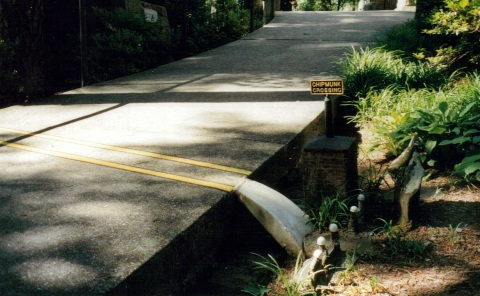
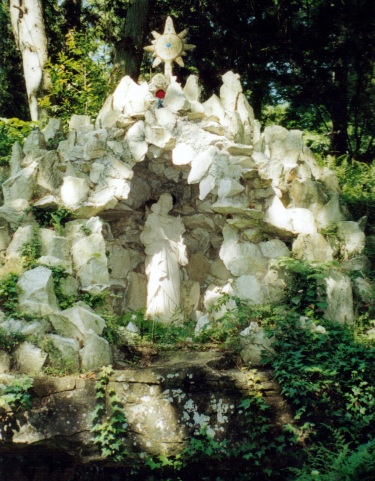

Brother Joseph was born and baptized with the name Michael Zoettl, in Landshut, Bavaria, during 1878. He was small in stature and suffered a number of setbacks in his early life. His mother died when he was young and, it seems, the stepmother that his father eventually married was cruel to young Michael. To make matters worse, he suffered a number of serious illnesses/accidents in his youth: he almost died in a flu epidemic, was almost drowned in an accident and suffered serious burns in another one!
As a teenager, he met Fr. Gamelbert Brunner O.S.B., who was scouting Europe for vocations to take back with him to America. After sharing a farewell cider with his father, and crying all night long, young Michael emigrated to the United States to commence his studies at the Benedictine Abbey of St. Bernard, near Cullman.
He settled in as a good student, worked hard, embraced the monastic life of work and prayer, and took his vows and the religious name of Joseph as a Benedictine monk.
Sad to relate, his progress was thwarted by yet another serious accident. Brother Joseph was helping with the construction of a belfry tower, when it suddenly collapsed. He was left with a hunched back caused by cervical kyphosis.
To make matters worse, this injury precluded his elevation to the sacred priesthood; because Canon Law stipulated, in those days, that no men with ''distracting disabilities'' could be ordained as priests.
We glimpse something of the humility and faithfulness of little Brother Joseph, in his subsequent acceptance of the life of an ordinary lay-brother in the monastic community.
However, the trials of this diminutive lay-brother were far from over. In his role as a housekeeper in various Benedictine missions, he suffered homesickness when being treated harshly by superiors. At least one priest on the missions called his cooking ''poison'' and kept a very close scrutiny of his day-to-day running of the coal supply.
Finding St. Therese and Her Little Way
In 1911, Brother Joseph was put in charge of the powerhouse at St. Bernard Abbey in Cullman. Long burdensome workdays of shovelling coal into the furnace ensued. These lasted some 17 hours and allowed barely enough spare time for Brother Joseph to hasten into Sunday Mass. The work was tedious and lasted every single day of the week.
Although we can recognise this treatment as harsh and even neglectful, it became a potential road of holiness for Brother Joseph Zoettl. He discovered St. Therese of Liseux's ''Little Way'' in the monastery library and progressed on the way of littleness.
This happened in more ways than one. To break up the monotony of constant pumping in the powerhouse, Brother Joseph began to make a miniature model church, by way of a hobby. He then made a miniature set of oriental buildings. These became an attraction for visitors to the abbey. One of the priests asked Brother Joseph to make some small grottoes to place little statues in. These were sold from a store in front of the Benedictine college to make money for the missions.
By the early 1930's, Brother Joseph had made and sold 5,000 small grottoes. In 1933 a train derailed and tipped its load of marble. The damaged cargo was given to the creative Brother Joseph. He constructed the beautiful Ave Maria Grotto, pictured at the top of this article. It was eventually dedicated, in the month of Our Lady, on the 17th May, 1934.
Growing Big - In Miniature!
Between then and 1958, Brother Joseph carefully created miniature representations of many of the most famous churches and monasteries in the world. He would study photographs of them and use all kinds of trinkets to produce small replicas. Â

Brother Joseph's ''Jerusalem in Miniature'' became a tourist stop-off for many Catholics heading south to the Louisiana coast each summer and its fame gradually spread through and beyond the Church.
In the forested and landscaped grounds of the monastery, he established small replicas of Jerusalem, the Vatican, the Assisi Basilica, the Fatima Basilica, the Lourdes Basilica, the Monte Cassino monastery, the famous Alamo Mission in San Antonio, Texas, and the Californian missions of St. Junipero Serra. He also included a ''Crucifix Tower'', as well as copies of the Leaning Tower of Pisa, the Statue of Liberty, a tribute to the efforts of the Red Cross in World War I, a memorial to soldiers from Alabama who died in World War II and another to remember the victims of the nuclear bombs that were dropped on Japan.
There are also representations of the Tower of Babel, various secular buildings, German castles and even the St. Bernard Abbey powerstation; where Brother Joseph had worked so hard hauling coal in his younger days! Â

This replica of the Basilica at Lourdes was his final construction. He completed it at the age of 80 in 1958. When Brother Joseph died in October 1961, his brother monks showed their appreciation by having a special bronze coffin made for his mortal remains.
As the 1960's progressed, Ave Maria Grotto became an important witness for God's love and healing, during the difficult years of the Civil Rights struggles that surged through Alabama and other parts of the American South. African-Americans found friendship, peace and monastic welcome here; and the Benedictine monks reminded visitors that one of the Magi was probably an Ethiopian. Â

As well as accurate representations of Catholic basilicas, like this one of Fatima, Brother Joseph gave free expression to his creative genius by including playful creations for children to appreciate.
For example: he made a Hansel and Gretel fairy castle with a dragon chained beneath it; a strange-looking ''Tower of Thanks'' to express gratitude to benefactors and visitors; and an assortment of unusual sculptures.
Each of Brother Joseph's creations are made from an eclectic mix of cement, coloured glass, costume jewellery, electrical bits and pieces, jars, marbles, pebbles, pottery, railroad spikes, sea shells, stones, tiles and even punctured commode floats! Â Â

The incredible attention to detail on his replicas, like this scale model of St. Peter's Basilica and the Vatican, must be seen to be appreciated.
Brother Joseph also made shrines to honour St. Joseph, St. Peter and St. Pope Pius X. Â

As St. Pope Pius X is one of my heroes in the Faith, I stopped there for this photograph. In these times, Pascendi Dominici Gregis must be compulsory reading for all who want to take their faith seriously.
This ''Chipmunk Crossing'' is a light-hearted touch in the grounds of the Ave Maria Grotto!

This grotto for St. Joseph was a peaceful place to spend a reflective moment or two.

When we visited in 2005, on our way to the Shrine of the Most Blessed Sacrament in Hanceville, Alabama, we prayed a decade of the Rosary on some stone seats near to the Ave Maria Grotto, which is pictured at the top of this article. It had a very similar sense of peace to the real Massabielle Grotto at Lourdes, in France.
An Example for These Times
In these difficult days for the Church, and for Catholics who wish to remain faithful to the full Catholic Truth, Brother Joseph Zoettl gives us a very helpful example.
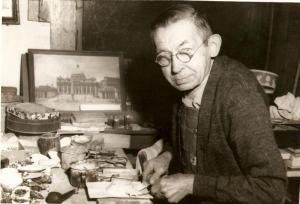
He suffered much in this life and was not able to fulfil his first sense of vocation as a priest. Still, without complaint he embraced the ''Little Way'' that God had marked out for him instead. By accepting his various crosses, he became little and almost unknown. Even when his creations unintendedly made the abbey famous, and a publicity film was made about his ''Miniature Jerusalem'' in the 1950's, he attempted to keep a low-profile. Through his acceptance, humility and the fruits of his creative expression, Brother Joseph was able to be a vessel for God to do great things.
Greater things, perhaps, than Brother Joseph ever imagined possible.Â
When we were there, we were impressed by the missionary evangelization that is still continuing today through the legacy of Brother Joseph. For example, the guest book asks whether or not the visitor is a Catholic. The great majority that we read had ticked ''Not''. This made the witness given by the peace of the place, the biography of Brother Joseph and the little signs in the grounds - explaining about the nature and meaning of the Holy Sacrifice of the Mass - all the more wonderful.
As we remember the great Mother Angelica in our prayers this week, perhaps we could also say a little prayer for Brother Joseph Zoettl and for the ongoing success of his unexpected mission.
If you can get to Alabama, we highly recommend visits to EWTN at Irondale, the Shrine of the Most Blessed Sacrament in Hanceville, and the Ave Maria Grotto near Cullman. And, remember, all of this is in the deeply ''Protestant South'' - in fact we were told that bus-loads of Southern-Baptists love to visit Mother Angelica's monastery.
St. Therese of Lisieux - Pray for us!Â



